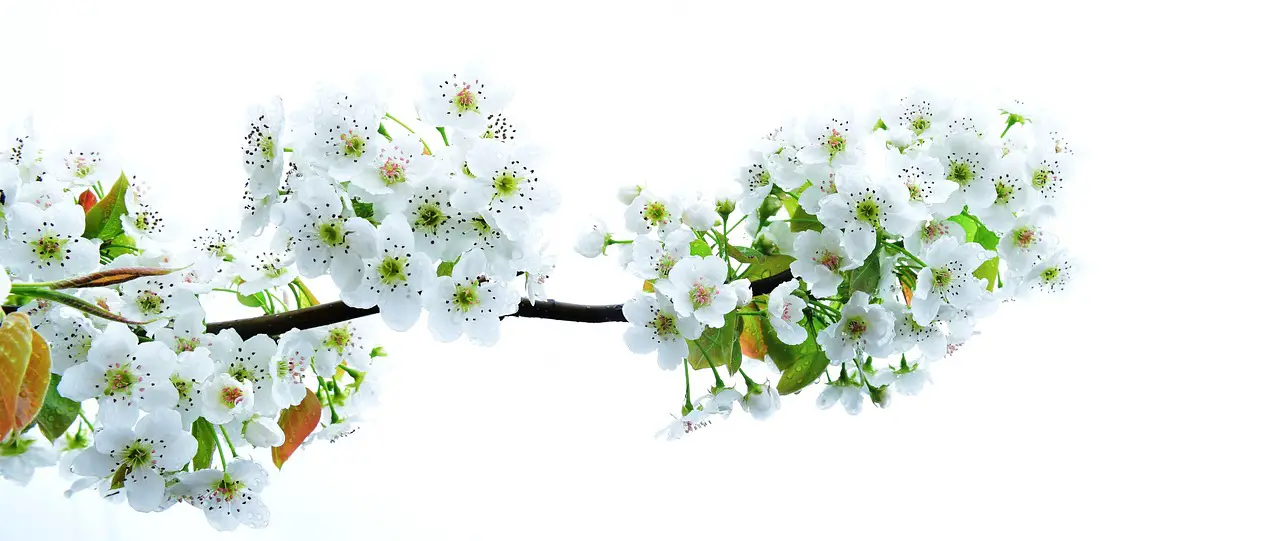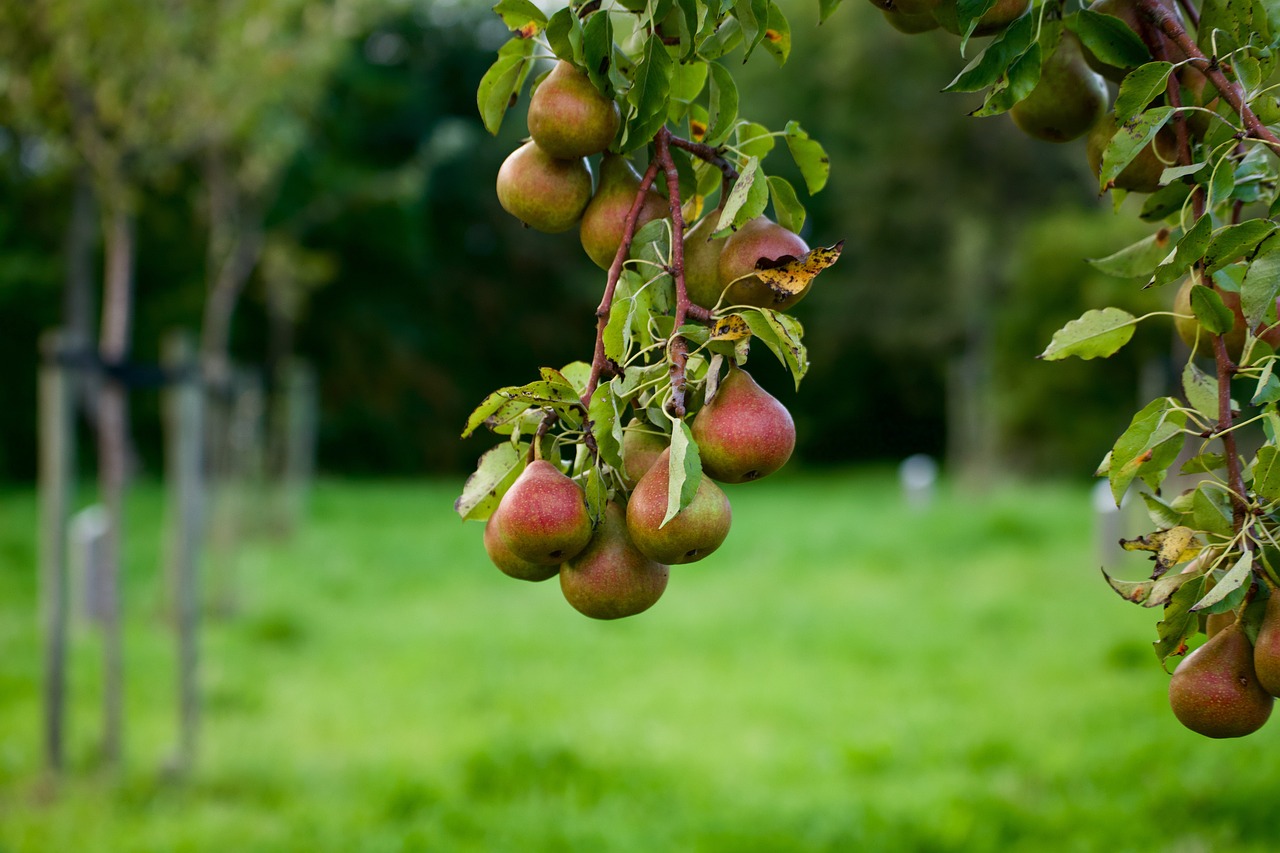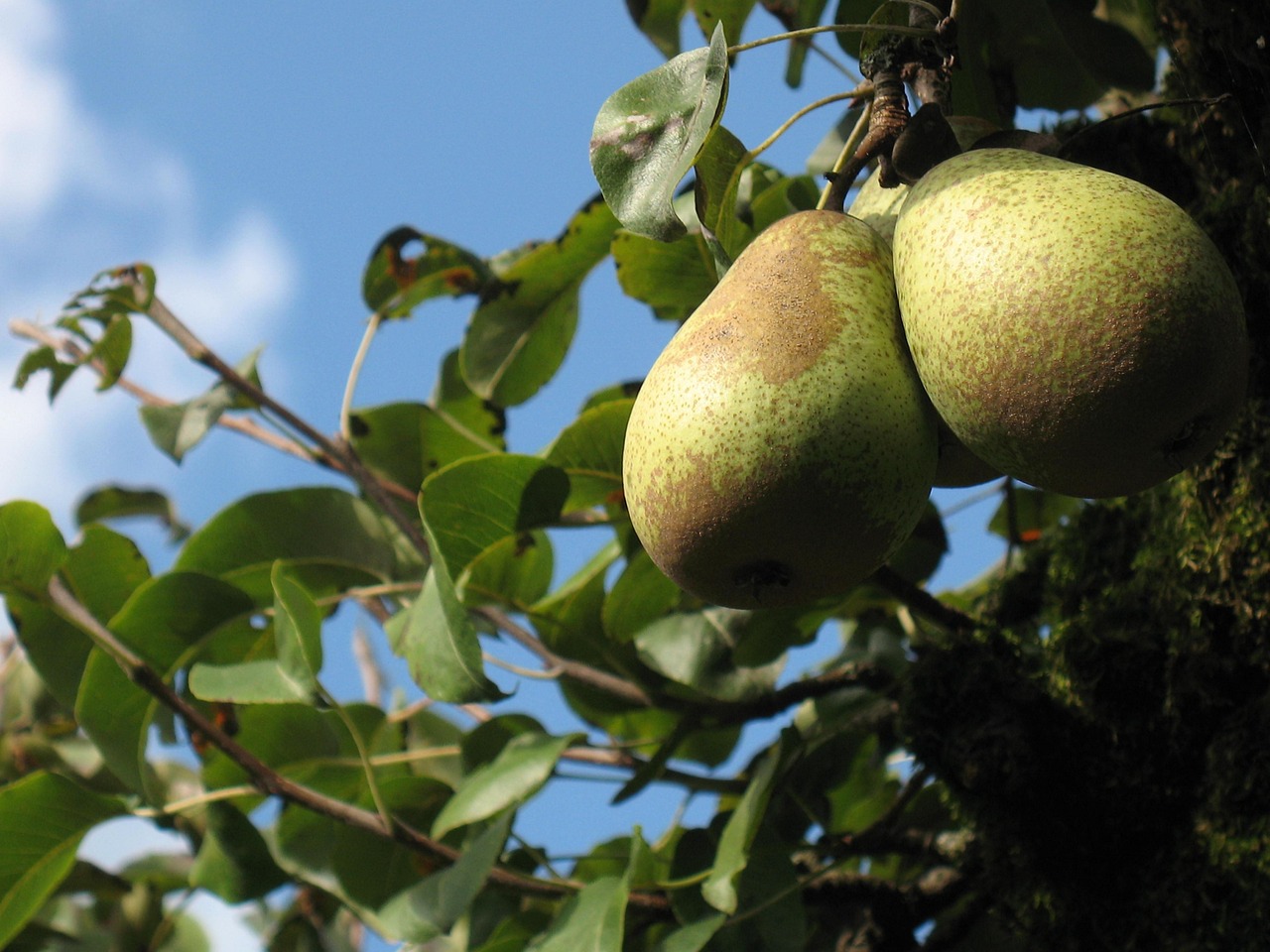Pear orchard pruning is essential for maintaining tree health, maximizing fruit yield, and ensuring easy harvests. Home and small growers should focus on proper techniques that promote airflow, sunlight penetration, and overall tree structure.
Pruning pear trees can seem daunting, but it is a critical component of fruit tree care. Proper pruning encourages the growth of healthy branches, reduces disease risk, and enhances fruit quality. For home and small-scale growers, understanding the basics of pruning can lead to more productive and healthier trees. This guide provides practical tips and techniques to help you effectively prune your pear orchard.

Before diving into the specifics of pruning, it is important to recognize the different types of pear trees. There are two main categories: European and Asian pears. Each type has its unique growth habits and fruiting characteristics. Knowing these differences can inform your pruning strategy.
| Type of Pear | Characteristics | Common Varieties |
|---|---|---|
| European Pears | Rounder fruit, sweeter taste, often requires cross-pollination | Bartlett, Bosc, Anjou |
| Asian Pears | Apple-like texture, crisp and juicy, typically self-pollinating | Shinseiki, 20th Century, Chojuro |
Understanding Pruning Basics
Pruning is best done during the tree’s dormant season, which typically occurs in late winter to early spring. This timing allows for easier visibility of the tree’s structure without leaves obstructing your view. It also minimizes stress on the tree and reduces the risk of disease transmission.
The primary goals of pruning are to remove dead or diseased branches, shape the tree for optimal growth, and improve air circulation within the canopy. Each cut should be made with a purpose in mind. Unnecessary cuts can harm the tree and reduce fruit production.

When approaching pruning, there are several techniques to consider:
- Thinning: This involves removing entire branches back to their base. It helps to open up the canopy, allowing light and air to reach more parts of the tree.
- Heading: This technique shortens branches by cutting them back to a bud. It encourages new growth and can be used to control the size of the tree.
- Cleaning: This means removing any dead, damaged, or diseased wood. Cleaning is crucial for maintaining tree health and preventing the spread of pests and diseases.
It is also important to maintain a balanced shape as you prune. A well-structured pear tree will have a central leader—this is the main trunk that should be taller than the other branches. Side branches should be spaced evenly around the trunk to allow for balanced growth.
Tools Needed for Pruning
Having the right tools makes pruning more efficient and effective. Here are some essential tools every home grower should have:

- Hand Pruners: For small branches up to ¾ inch in diameter.
- Loppers: For branches up to 2 inches thick; these provide leverage for cleaner cuts.
- Saw: A small saw or pruning saw is necessary for larger branches that cannot be cut with loppers.
- Gloves: Protect your hands from thorns and rough bark.
- Pole Pruner: Useful for reaching higher branches without a ladder.
Before using any tools, ensure they are clean and sharp. This helps prevent injury to both the gardener and the tree. Dull tools can crush branches rather than making clean cuts, leading to increased risk of disease.
Proper sanitation is also crucial in maintaining tree health. Disinfect tools between cuts, especially when working with diseased wood. This practice helps minimize the risk of spreading pathogens from one part of the tree to another.
The process of pruning may seem overwhelming at first, but with practice and patience, it becomes easier over time. Understanding your specific pear varieties, employing correct techniques, and using appropriate tools will contribute to a thriving orchard.

Timing Your Pruning
Choosing the right time to prune pear trees is crucial for their health and productivity. Pruning at the wrong time can lead to excessive sap loss, increased vulnerability to disease, and reduced fruit production. The ideal timing largely depends on the type of pear tree, as well as your local climate.
Generally, the best time to prune pear trees is during their dormant period, when they are not actively growing. This typically occurs in late winter to early spring before new growth begins. During this time, the trees are less susceptible to disease and damage from pruning cuts.
In colder climates, early spring may be the most suitable time, as it allows you to avoid frost damage. In warmer areas, late winter may be preferable. Here are several factors to consider when determining the best time:
- Climate: In regions with harsh winters, wait until the threat of frost has passed.
- Tree Age: Younger trees may benefit from earlier pruning to shape their structure.
- Variety: Different pear varieties may have unique growth patterns that influence pruning timing.
Types of Pruning Cuts
Understanding the various types of pruning cuts can enhance your skills and improve your orchard’s health. Each cut serves a specific purpose, and using them effectively can lead to better tree structure and fruit production.
- Heading Cuts: These cuts shorten branches by removing part of the stem. Heading cuts stimulate lateral growth, encouraging the development of new shoots.
- Thinning Cuts: This involves removing an entire branch back to its base. Thinning helps reduce crowding within the canopy, allowing better light penetration and air circulation.
- Pinching: This technique involves removing the soft tips of young shoots to encourage bushier growth. Pinching is often used on young trees or during the growing season.
Common Pruning Mistakes
Even experienced growers can make mistakes when pruning pear trees. Being aware of common pitfalls can help you avoid them and ensure effective pruning practices. Here are some mistakes to watch out for:
- Over-pruning: Removing too many branches can stress the tree and reduce fruit yield. Always assess the need for each cut.
- Improper Cuts: Making cuts at the wrong angle or leaving stubs can lead to disease and rot. Always cut just above a bud or lateral branch.
- Ignoring Tree Shape: Failing to maintain a balanced shape can result in poor growth and fruiting. Aim for an open center design to promote airflow.
Pruning Techniques for Different Growth Stages
The pruning techniques you employ will vary depending on the age and growth stage of your pear trees. Each stage has different needs that can influence how you prune effectively.
Young Trees
For young pear trees, pruning focuses on establishing a strong framework. Here are some key steps:
- Select a Leader: Choose a central leader that will serve as the main trunk. This leader should be taller than side branches.
- Encourage Lateral Branches: Select 3-5 strong lateral branches spaced evenly around the trunk. These will become the primary fruiting limbs.
- Pinch New Growth: During the growing season, pinch back new shoots to encourage bushier growth and stronger branching.
Mature Trees
Mature pear trees require maintenance pruning to ensure continued health and productivity. Follow these practices:
- Remove Dead or Diseased Wood: Regularly inspect branches for signs of disease or damage and remove them promptly.
- Avoid Crowding: Thin out branches that are crossing or overcrowding to allow light and air to penetrate the canopy.
- Maintain Shape: Keep an eye on the overall shape of the tree. Trim back overly vigorous branches to maintain balance.
Pest and Disease Considerations
Pest and disease management is integral to successful pruning practices. Understanding how pruning affects tree health can help prevent issues in your orchard. Proper pruning can reduce the risk of various pests and diseases by improving air circulation and sunlight exposure.
Here are some common pests and diseases that can affect pear trees:
| Pest/Disease | Description | Control Methods |
|---|---|---|
| Pear Psylla | A small insect that feeds on sap, causing leaf curling. | Use insecticidal soap or plant-based insecticides; prune infested areas. |
| Crown Gall | A bacterial disease that causes galls on roots and stems. | Avoid injury during pruning; remove infected plants immediately. |
| Fire Blight | A bacterial disease causing blackened, wilted branches. | Prune infected wood at least 8-12 inches below visible signs; disinfect tools between cuts. |
By maintaining good pruning practices and being vigilant about potential threats, you can help ensure your pear orchard remains healthy and productive for years to come.
Post-Pruning Care
After pruning your pear trees, providing proper care is essential to ensure they recover well and thrive. Post-pruning care helps the trees heal from cuts and promotes healthy new growth. Here are some important considerations and practices to follow after pruning.
Watering and Fertilizing
Proper watering and fertilization play a vital role in supporting the health of your pear trees after pruning. Here are guidelines to follow:
- Watering: Ensure your trees receive adequate water, especially during dry periods. Newly pruned trees may require more frequent watering to help them recover.
- Fertilizing: Apply a balanced fertilizer in early spring, just before new growth begins. This provides essential nutrients that support recovery and fruit production.
Be cautious not to over-fertilize, as this can lead to excessive vegetative growth at the expense of fruiting. A soil test can provide valuable insights into nutrient levels and help guide your fertilization strategy.
Mulching
Applying mulch around the base of your pear trees can provide numerous benefits. Here are some advantages of using mulch:
- Moisture Retention: Mulch helps retain soil moisture, reducing the need for frequent watering.
- Weed Control: A layer of mulch suppresses weed growth, minimizing competition for nutrients and water.
- Temperature Regulation: Mulch can help maintain consistent soil temperatures, protecting roots during extreme weather.
Use organic materials like wood chips, straw, or shredded leaves. Apply a 2-4 inch layer of mulch but keep it a few inches away from the trunk to prevent rot.
Monitoring Tree Health
Regularly monitoring the health of your pear trees after pruning is essential for catching potential problems early. Here are some key aspects to observe:
Signs of Stress
After pruning, it is normal for trees to show some signs of stress. However, prolonged or severe stress signals a need for intervention. Look for the following signs:
- Wilting Leaves: This may indicate inadequate watering or root damage.
- Discoloration: Yellowing or browning leaves can be a sign of nutrient deficiencies or disease.
- Pest Activity: Keep an eye out for signs of pests such as holes in leaves or visible insects.
Disease Symptoms
In addition to monitoring for stress, watch for signs of disease that may arise after pruning:
- Leaf Spot: Dark spots on leaves can indicate fungal infections that require treatment.
- Cankers: These are sunken areas on branches that may signal bacterial or fungal infections.
- Fruit Issues: Monitor for abnormal fruit development, which could indicate underlying problems.
Reassessing Your Pruning Strategy
After completing the pruning process and allowing some time for recovery, it is beneficial to reassess your techniques and strategies. This helps you improve your approach for future seasons.
Evaluating Results
Take note of how your trees respond to the recent pruning. Here are some points to consider:
- Growth Patterns: Observe whether new growth appears healthy and vigorous.
- Fruit Production: Assess if fruit yield has improved compared to previous years.
- Pest and Disease Incidence: Monitor if there has been an increase or decrease in pest problems.
Adjusting Techniques
If you notice issues with your current pruning practices, consider adjusting your techniques based on what you learn. For example:
- If trees are too crowded, focus on thinning more aggressively in the future.
- If disease is a frequent issue, refine your cleaning techniques and tools.
- If fruit yield is low, evaluate if you need to change the timing or extent of your cuts.
Seasonal Considerations
The needs of your pear orchard may change with the seasons. Understanding these seasonal variations can help you adapt your care practices accordingly.
Spring Care
In spring, as trees awaken from dormancy, focus on the following:
- Pest Monitoring: Begin scouting for pests as temperatures rise and insects become active.
- Nutrient Management: Apply fertilizers based on soil tests to support new growth.
- Irrigation Planning: Establish a watering schedule based on rainfall and temperature patterns.
Summer Care
During the summer months, tree care shifts focus toward maintenance and monitoring:
- Irrigation Needs: Increase watering during hot spells to prevent stress on trees.
- Pest Control: Use integrated pest management strategies to combat emerging pests.
- Crown Management: Continue to monitor tree shape and make minor adjustments as needed.
Autumn Preparations
As autumn approaches, prepare your orchard for winter:
- Final Pruning Touches: Make any necessary adjustments before dormancy sets in.
- Harvesting: Ensure timely harvesting of pears to prevent overripening and dropping.
- Winter Protection: Consider mulching or wrapping young trees to protect against frost damage.
Caring for your pear orchard is an ongoing process that requires attention throughout the year. By implementing these practices and staying vigilant, you will foster healthy trees that yield bountiful harvests year after year.
Advanced Pruning Techniques
In addition to the basic pruning techniques discussed earlier, there are advanced methods that can enhance the health and productivity of your pear trees. These techniques can be particularly useful for experienced growers looking to refine their approach.
Espalier Pruning
Espalier pruning is a technique that involves training trees to grow flat against a wall or trellis. This method is ideal for small spaces and can create a visually appealing garden feature. Here are the steps to implement espalier pruning:
- Select a Framework: Choose a wall, fence, or trellis to support the tree.
- Initial Training: As the tree grows, select and tie down branches to create a desired shape, typically a fan or an open lattice.
- Regular Maintenance: Continue to prune regularly to maintain the shape and remove any unwanted vertical growth.
Crown Reduction
Crown reduction is a method used to decrease the overall height of a tree while maintaining its health. This technique can help manage tall trees in smaller landscapes. Here’s how to properly execute crown reduction:
- Selective Cutting: Identify the tallest branches and cut them back to lateral branches that can support new growth.
- Aim for Balance: Ensure that the remaining branches are evenly spaced to maintain a balanced appearance.
- Minimize Stress: Avoid cutting more than 25% of the crown at one time to reduce shock to the tree.
Utilizing Technology in Orchard Management
Technology plays an increasingly important role in modern orchard management. Home and small growers can leverage various tools and applications to enhance their pruning and overall care practices.
Mobile Applications
Several mobile applications are designed to assist growers with tasks such as pest identification, disease diagnosis, and even pruning advice. Some popular options include:
- PlantSnap: Helps identify plants and pests through image recognition.
- Garden Answers: Offers expert advice on plant care and gardening techniques.
- Pest Manager: Provides information about common pests and treatment options.
Drones and Sensors
Drones equipped with cameras can provide aerial views of your orchard, helping you assess tree health and detect issues from above. Additionally, soil moisture sensors can help monitor irrigation needs effectively.
- Drones: Aerial imagery can reveal areas of stress or disease that may not be visible from the ground.
- Soil Sensors: These devices monitor moisture levels and help you optimize watering schedules.
Community Resources and Education
Engaging with local gardening clubs, extension services, or agricultural schools can provide valuable resources for pear orchard management. Many communities offer workshops, seminars, or online forums where growers can learn from each other. Consider these options:
- Local Agricultural Extensions: These organizations often provide free resources and advice tailored to your region.
- Workshops: Attend hands-on workshops that focus on pruning techniques or pest management strategies.
- Online Forums: Join gardening forums or social media groups where you can ask questions and share experiences with fellow growers.
Final Thoughts
Pruning pear trees is a multifaceted process that requires knowledge, skill, and attention to detail. By understanding the principles of pruning, selecting the right times for cuts, and implementing proper post-pruning care, you can ensure your pear orchard remains healthy and productive.
Remember that each tree is unique, and what works for one may not work for another. Continuously observe your trees and adapt your practices as needed. Engaging with technology and community resources can further enhance your ability to manage your orchard effectively.
Your efforts in maintaining a well-pruned pear orchard will pay off with bountiful harvests and healthier trees. With patience and practice, you will become more adept at recognizing the needs of your trees and responding appropriately. Embrace the journey of growing pears, and enjoy the fruit of your labor!
